Training Ship 'Mercury', Southampton, Hampshire
The Mercury training ship was established in 1885 by London philanthropist Charles Hoare. The ship, a barque previously named Illovo, was originally moored at Binstead on the Isle of Wight.
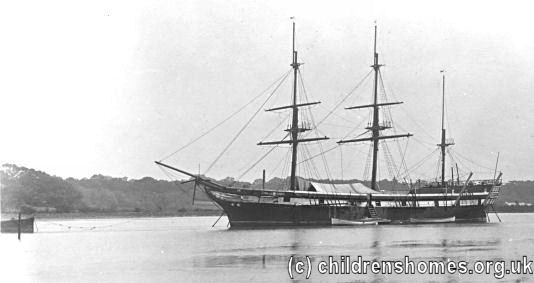
Training ship Mercury, c.1910. © Peter Higginbotham
In 1892, the ship moved to the River Hamble near Southampton where land had been acquired on which to erect shore-based accommodation for the school. After Hoare's death in 1908, the Honorary Director of the school became Charles Burgess ('CB') Fry, the well-known scholar and sportsman. In 1911, the Mercury accommodation for 150 boys of good character between the ages of 12 and 15½ years. The minimum height requirements for admission were:
| Age | Height | Chest |
| 13½-14 | 4ft. 9½in. | 28in. |
| 14 -14½ | 4ft. 10½in. | 30in. |
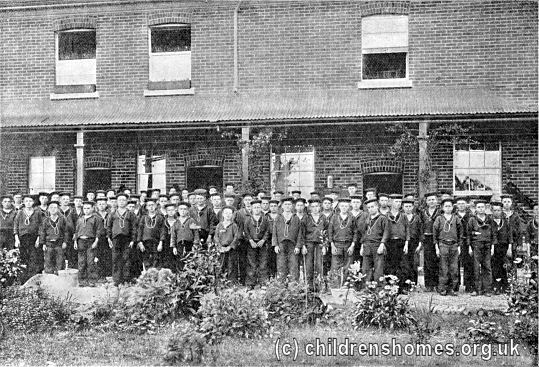
A group of Mercury boys, c.1895. © Peter Higginbotham
In addition to cutters and yawls and a hospital ship, the 45-acre shore establishment included a church, gymnasium, etc.
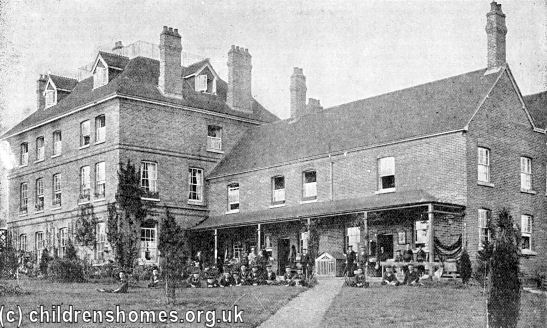
The Shore Branch of the Mercury, c.1895. © Peter Higginbotham
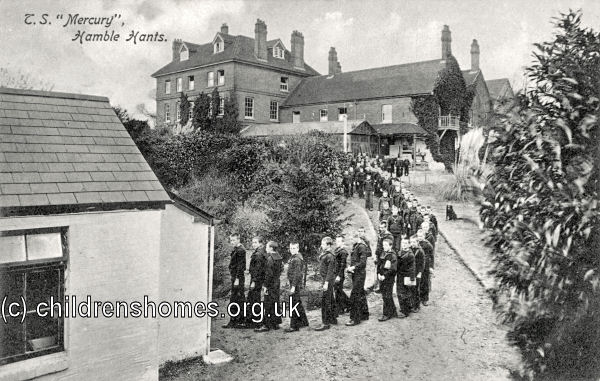
The Shore Branch of the Mercury, c.1913. © Peter Higginbotham
The training given was primarily for sea-service, and 90 percent of the boys gained the higher ratings in the Royal Navy. Boys were taught to swim in the tidal river and expected to participate in 1000 yards swimming races
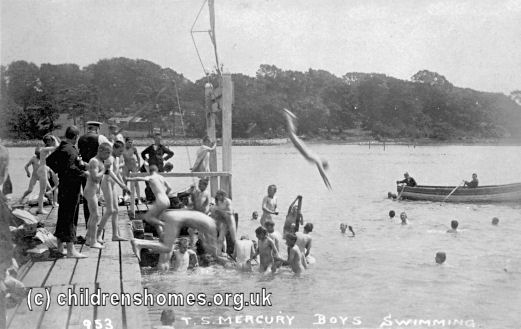
Training ship Mercury - boys swimming, c.1910. © Peter Higginbotham
In the Local Government Board's Annual Report for 1894-5, Mr Baldwyn Fleming, the Board's Poor Law Inspector for Southern England, noted that the Mercury had been accredited for operation as a Certified School:
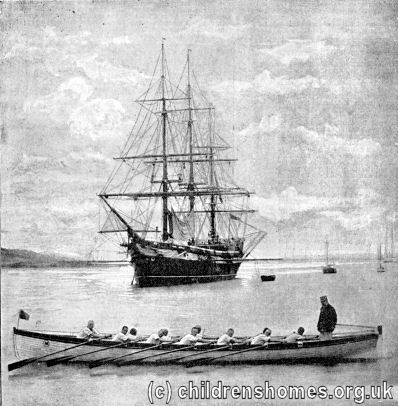
The Mercury racing crew, c.1895. © Peter Higginbotham
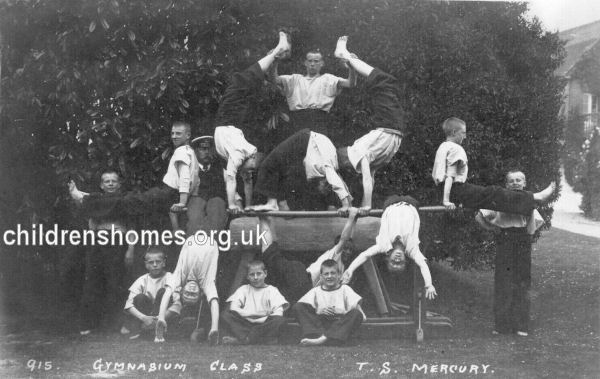
Training Ship Mercury gymnasium class, early 1900s
Like other training ships, the Mercury had a band.
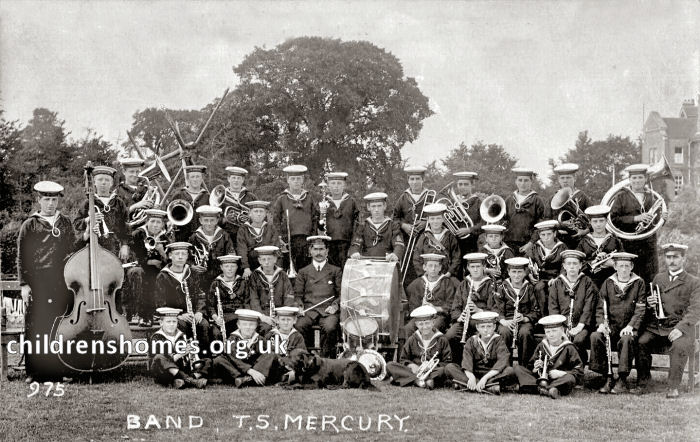
Training Ship Mercury band practice, c.1915. © Peter Higginbotham
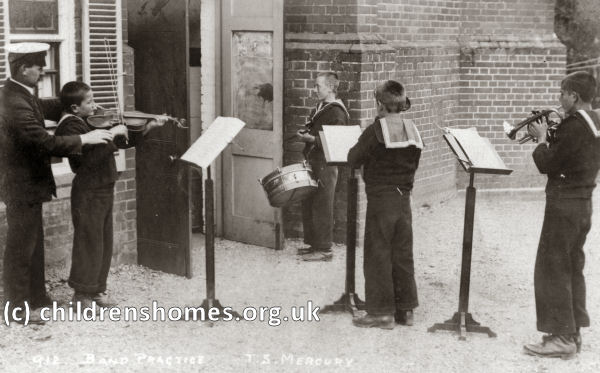
Training Ship Mercury band practice, c.1911. © Peter Higginbotham
In 1914, the original ship was supplemented with HMS President (formerly named HMS Gannet), a former Naval Reserve drill-ship previously moored in London's West India Docks. The old Illova was retired in 1916 and the President took on the Mercury name. The new Mercurywas mainly used a dormitory for the school where the boys slept in hammocks. Despite the later installation of central heating, it was apparently not uncommon to find ice in the hammocks in winter.
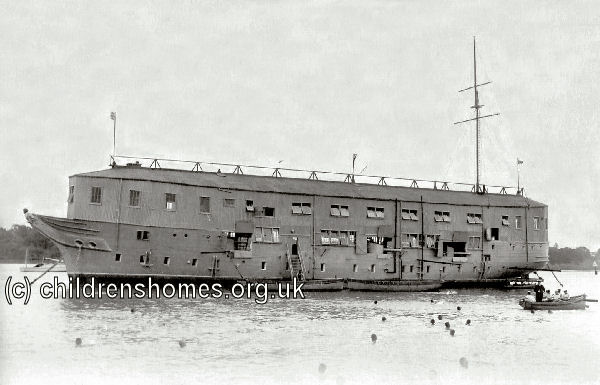
Training ship Mercury (formerly HMS Gannet). © Peter Higginbotham
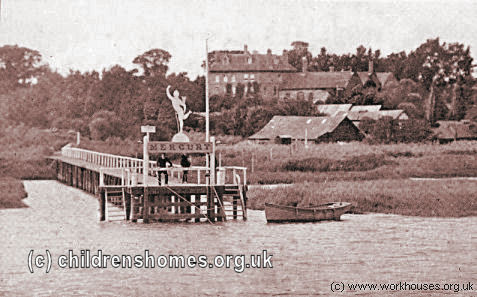
Training ship Mercury landing-stage, c.1919. © Peter Higginbotham
Following the abolition of Boards of Guardians in 1930, a few boys were still financed by charities like the Marine Society and forces Benevolent Funds. However, the majority were wither privately funded or were financed by local education authorities under the Sea Training Scheme.
The school finally closed in July 1968 after training over 5,000 boys.
Records
Note: many repositories impose a closure period of up to 100 years for records identifying individuals. Before travelling a long distance, always check that the records you want to consult will be available.
- Hampshire Record Office, Sussex Street, Winchester SO23 8TH. Has various archives, including photographs, from 1888 to 1968. Mr A.L. White of the T.S. Mercury Old Boys' Association (email: alwhite4151@gmail.com, tel: 01483 490897) still manages the roll books, however, and endeavours to provide information on individual Mercury boys.
Bibliography
- White, A.L. ('Snowy') The Training Ship "Mercury" — A History (2003, T S Mercury Old Boys' Association)
- Fry, C.B. Life Worth Living (1939, Reprinted by Pavilion Books Ltd. in 1986)
- Ellis, Clive C.B. The Life of Charles Burgess Fry (1984, Dent)
- Wilton, Iain C.B. Fry, An English Hero (1999, Richard Cohen Books)
Links
Except where indicated, this page () © Peter Higginbotham. Contents may not be reproduced without permission.


